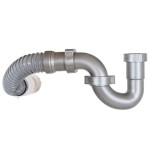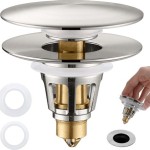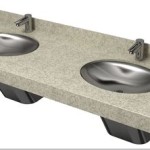How to Even a Bathroom Floor
A level bathroom floor is essential for both aesthetics and functionality. An uneven floor can create tripping hazards, make it difficult to install fixtures, and detract from the overall appearance of the bathroom. Fortunately, leveling a bathroom floor is a manageable DIY project that can greatly enhance the space. This article provides a comprehensive guide on how to even a bathroom floor, outlining the necessary steps and considerations.
1. Assess the Severity of the Unevenness
The first step is to determine the extent of the unevenness. This can be done by using a level or a straight edge. If the difference in elevation is minimal, it may be possible to simply use a self-leveling compound. However, if the unevenness is more significant, a more extensive approach, such as using a mortar bed, may be necessary.
To assess the severity of the unevenness:
- Use a level or a straight edge to check the floor for high and low spots.
- Mark the high spots with a pencil or chalk.
- Measure the difference in elevation between the high and low spots.
Based on the measurements, you can determine the appropriate method for leveling the floor.
2. Prepare the Existing Floor
Before applying any leveling compound, it is crucial to prepare the existing floor. This involves removing any loose or damaged tiles, cleaning the surface, and ensuring proper drainage.
Here's how to prepare the existing floor:
- Remove any loose tiles and grout using a hammer and chisel.
- Clean the floor thoroughly with a broom, vacuum, or damp cloth to remove any debris or dust.
- Check for any cracks or gaps in the existing floor and repair them using patching compound or epoxy.
- Ensure proper drainage by checking the slope of the floor towards the drain. If necessary, adjust the slope using mortar or a leveling compound.
A clean and well-prepared floor will ensure the leveling compound adheres properly and provides a solid base.
3. Choose the Right Leveling Compound
The type of leveling compound used will depend on the severity of the unevenness and the desired finish. For minor imperfections, self-leveling compound is an excellent option. It is easy to apply and self-smooths to create a level surface.
For more significant unevenness, mortar beds or thin-set mortar can be used. However, these methods require more skill and experience. Consider the following factors when choosing the right leveling compound:
- Severity of Unevenness: Self-leveling compound is suitable for minor imperfections, while mortar beds or thin-set mortar are better for significant unevenness.
- Finish Requirements: If a smooth finish is desired, self-leveling compound is the ideal choice. For a rougher finish, mortar beds or thin-set mortar can be used.
- Drying Time: Self-leveling compound typically dries faster than mortar beds or thin-set mortar.
- Cost: Self-leveling compound is generally more expensive than mortar beds or thin-set mortar.
Consult with a professional or review product specifications to choose the appropriate leveling compound for your project.
4. Apply the Leveling Compound
Once the floor is prepared and the leveling compound is chosen, it's time to apply it. The application method will vary depending on the type of compound used. Here are general steps for applying self-leveling compound:
- Mix the compound according to the manufacturer's instructions.
- Pour the mixed compound onto the floor, starting from the furthest point from the drain.
- Spread the compound evenly using a trowel or a squeegee.
- Use a level or a straight edge to check for high and low spots.
- Allow the compound to dry completely before proceeding with the next steps.
Mortar beds and thin-set mortar require additional steps, such as setting up screeds and applying the mortar in layers. Consult with a professional or follow the manufacturer's instructions carefully.
5. Install Flooring
After the leveling compound has dried completely, you can install the desired flooring. This could include tiles, laminate, hardwood, or other options. It is important to ensure that the new flooring is compatible with the leveling compound used.
The installation process will vary depending on the type of flooring chosen. It is essential to follow the manufacturer's instructions carefully and ensure that the flooring is installed properly to prevent future problems.
6. Seal the Floor
For some flooring types, such as tiles, it is essential to seal the floor to protect it from moisture and stains. Sealing also enhances the appearance of the floor and makes it easier to clean. Choose a sealant that is specifically designed for the type of flooring you installed and follow the manufacturer's instructions for application.
By following these steps and choosing the appropriate materials, you can level a bathroom floor and create a more functional and aesthetically pleasing space. Remember to consult with a professional if you have any doubts or concerns about the process.

How To Level The Floor For Laying Tiles Lexa Tiling 0425 802 036

Leveling A Bathroom Floor Steps And Tips

Condo Blues Ten Things You Need To Know Level And Repair An Uneven Floor

Using Self Leveling Concrete To Fix A Bathroom Floor

14 Essential Bathroom Remodeling Tips Civillane

Step 7 Bathroom Floor Tiles Reshaping Our Footprint
How To Level Old Plywood Floor Before Laying Ditra And Tile Diy Home Improvement Forum

How To Self Level A Bathroom Floor Using Leveler Cement

A Guide For Flooring Your Bathroom What To Do And Not

How To Level Bathroom Floor Before Tiling Cement Mixing Ratio Leveling Techniques







